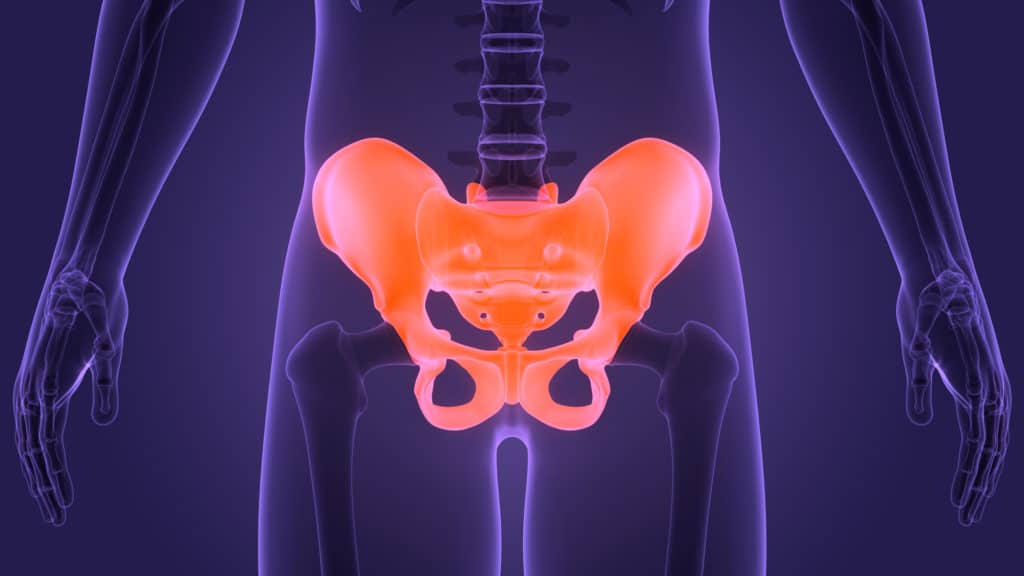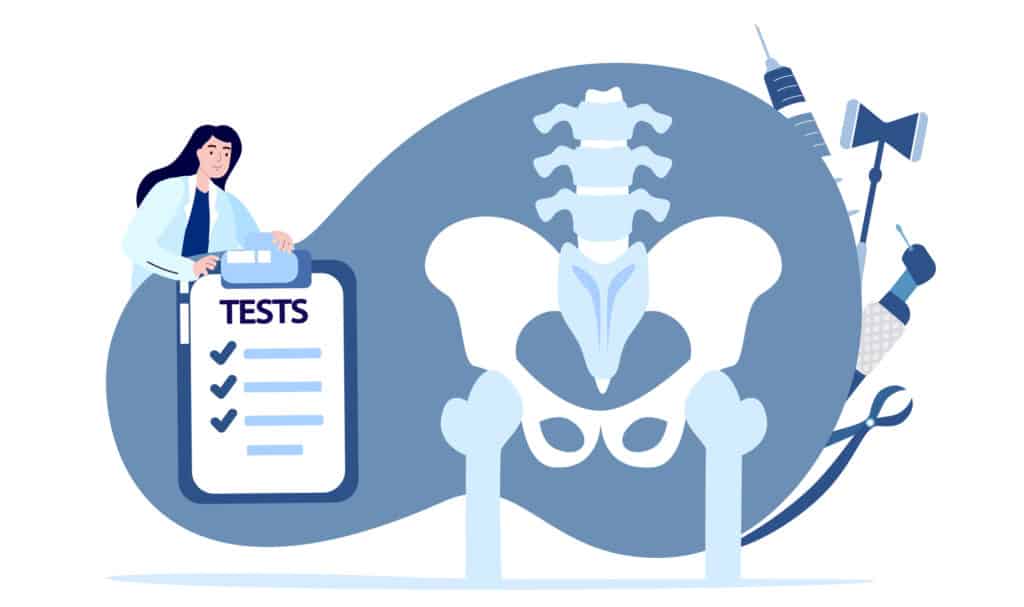
Understanding Pelvic Tilt: What Is It And Why Is It A Problem?
Have you been told by a doctor that you have a pelvic tilt?
When we talk about dysfunctional movement (the type that leads to chronic pain and other problems), muscle imbalance is one of the primary causes.
The so-called “pelvic tilt”, specifically, is one of the leading causes of muscle imbalance, lack of motor control, reduced mobility, poor posture, and loss of stability.
But what is it, exactly?
Well, we describe pelvic tilt as the position of the pelvis in relation to the body. The pelvis is said to be out of place when it tilts in either direction, disrupting mobility, posture, and body stability.
In many pelvic tilt conditions, the extensors and the hip flexors (the muscles that allow the hips to bend and flex) play a significant role.
More Blogs From Nancy Branberg
The Different Stages Of Pelvic Organ Prolapse: What You Need To Know
How To Regain Your Sexual Confidence After Giving Birth
Is It Normal To Have Abdominal Pain After Pregnancy?
Both muscles link to your lower back and pelvis, and if they suffer strain, there is a knock-on effect on the other muscles in the area.
Some of the muscles in this group that might be affected are the quadratus lumborum (a back muscle deep inside the abdomen).
The rectus femoris (one of the large muscles that run down the front of your thigh) and the psoas major (the long sensitive muscle that connects your spine to your thigh bone).
These muscles all relate to and influence the lower back and are responsible for good posture.
When we treat a pelvic tilt, we aim to prevent other issues from an incorrectly positioned pelvis, such as pelvic floor dysfunction.
If your control over your pelvic floor muscles is affected by a pelvic tilt, it can be the catalyst to many different problems in the body.

These problems occur because the pelvic floor muscles play a vital role in organ function and muscular contractions.
Although it’s not exclusive, we most commonly see pelvic tilt problems in pregnant women. Notably, the position of your pelvis plays a crucial role in delivery, so we always include pelvic tilt movements in our prepartum physical therapy sessions.
Likewise, the position of your pelvis is critical to good recovery after delivery too.
But the good news is that incorporating the right kind of corrective movements and therapeutic exercises can correct a pelvic tilt.
Using physical therapy, we strengthen the body and rectify the movement dysfunctions that contribute to chronic pain.
Performing these corrective exercises under the supervision of a physical therapist can also lessen the risk of other medical conditions or injuries appearing because of the pelvic tilt and associated muscle imbalances.
What Are The Symptoms Of A Pelvic Tilt?

There are generally three types of pelvic tilt: posterior (backward), anterior (forwards), and lateral (sideways).
As we mentioned, the pelvis position in relation to the body is how we quantify a pelvic tilt and analyze the direction in which the pelvis has tilted.
Therefore, diagnosing the type and position of the pelvic tilt is always the first step in a remedial treatment plan.
- Posterior Pelvic Tilt: This type of pelvic tilt occurs when the front part of the pelvis tilts back and up, with the lower part of the pelvis rotating underneath the body. This positioning stresses the spine’s position, but we can fix it with corrective movements and exercises. One of the leading causes of posterior pelvic tilt is tight hamstrings.
- Anterior Pelvic Tilt: With this type of pelvic tilt, the front of the pelvis moves forward, and the back portion rotates upwards. As with the other pelvis issues, anterior pelvic tilt can affect the spine primarily caused by a poor sitting posture and a sedentary lifestyle. When you sit for long periods, your hip flexors can become taut, influencing the pelvis position. When the tight hip flexor impacts the spine’s stability, it directly affects the alignment of the pelvic bone. As a result, pregnant women are more liable to experience anterior pelvic tilt. We call it a lower or pelvic crossed syndrome when this occurs in combination with weak glutes and abdominal muscles.
- Lateral Pelvic Tilt: Lateral pelvic tilt occurs when the pelvis shifts to one side, leading to one hip becoming higher than the other. This shift causes muscle imbalance in other parts of the body. The muscle group mainly responsible for this is the erector spinae (the muscles that help us stand and sit up straight). We treat those first – before attempting to correct the position of the pelvis. For the lumbar spine to remain neutral in position – and not create problems, the pelvis should be in the correct alignment with the shoulders without either side being higher.
In lots of cases, there are no obvious symptoms of a pelvic tilt. Instead, they’re usually discovered when you seek treatment for another condition.
But if you have any of the following symptoms, it’s worth considering that you may be suffering from a pelvic tilt, and we recommend that you book an appointment with us for a proper diagnosis:
- Tight muscles around the pelvic region
- Tight thigh muscles
- Weak abdominal muscles and glutes
- Poor posture, possible with a protruding belly
What Causes Pelvic Tilt Issues?

A pelvic tilt does not happen overnight but instead occurs over time because of improper movement, poor posture, or remaining sedentary.
But diagnosing the imbalance and treating it accordingly with therapeutic exercises and corrective movements can make all the difference to your total body health and wellbeing.
In most cases, the cause of a pelvic tilt is an imbalance in one of the following muscles:
- Quadratus Lumborum: If you have one leg slightly shorter than the other, it can be because of a lateral pelvic tilt. In most of these cases, the quadratus lumborum muscle is responsible for creating the lateral pelvic tilt. This back muscle is located relatively deep within the abdomen wall. It joins both the lumbar spine and the pelvis. The primary role of this muscle is to allow you to bend sideways on both sides. In addition, it provides stability to the pelvis. When this muscle tightens towards one side of the spine, it creates stress that pulls up the pelvis on the opposite side, which leads to a lateral pelvic tilt.
- Hip Flexors: When the hip flexors are under stress, they tighten up and can cause a pelvic tilt. If the hip flexor gets shorter, the hip extensors lengthen to compensate. The hip flexor muscles connect to the lower back and the pelvis. Their primary role is to enable bending at the hip. But sitting in a poor posture for extended periods flexes the hip muscles. It stresses the muscles – causing the front of the pelvis to move forwards and the back to move upwards over time. Over time, forcing your hips to stay in this unnatural position while sitting is the leading cause of anterior pelvic tilt.
- Hamstrings, Glutes, and Abs: In a posterior pelvic tilt. If the glutes and the hamstrings are tight, they pull the bottom of the pelvic floor under the body while the pelvis front moves upwards and back. Tight abdominal muscles pull the pelvis up, and weak lower back muscles don’t respond, leading to a posterior pelvic tilt.
How To Fix Your Pelvic Tilt

It’s challenging, if not impossible, to correct a pelvic tilt at home. However, you can prevent or improve the symptoms of a pelvic tilt by increasing your activity levels and reducing the amount of time you spend with your hips flexed.
It pays to improve your posture when you are sitting, too – by making sure your desk, seat, and computer are all ergonomically positioned. Specific stretching and strengthening exercises, like squats and hip flexors stretches, can help too.
But treating these types of issues with the pelvis position is subject to the cause, severity, and kind of pelvic tilt that you have, so it’s vital to get a proper diagnosis and treatment from a trained physical therapist.
Nancy Branberg is a women’s health specialist with 40+ years of physical therapy experience under her belt. She specializes in the pelvis, the pelvic floor muscles, the reproductive organs, pre-and post-partum therapy, post-menopausal support, and everything in between.
She gets to the root of your issues without pain or shame. She takes great pride in helping women with embarrassing problems like constipation and urinary incontinence and taboo subjects like pain during intercourse.
You are in very safe hands. At the Nancy Branberg PT clinic, Nancy provides a safe space for honest and difficult conversations. So you can overcome your obstacles and start living the pain-free, shame-free life you deserve.
You can book a free consultation with Nancy – to get to know each other better. Choose from a telephone consultation or a face-to-face consultation at the Falls Church clinic.
There is no financial investment required on your part until you’re 100% satisfied that you want to go ahead with treatment.
Don’t suffer or worry in silence. Reach out. I can help.


